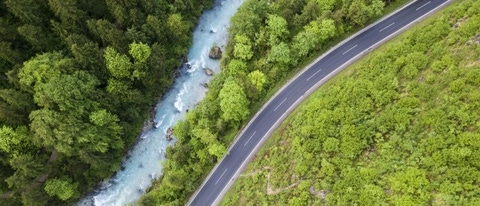Automotive
ChemCycling® and Biomass Balance Approach
& case studies
Turning plastic waste into new products
How much CO2 emissions can be reduced by a product manufactured by the mass balance method using pyrolysis oil as a raw material compared to fossil resources? This depends on the raw material pyrolysis oil and the process of the corresponding product. An external study, which was reviewed by three independent experts, comes to the clear conclusion that chemical recycling (pyrolysis) of mixed plastic waste emits 50% less CO2 than incineration of mixed plastic waste.
The study also compares the CO2 emissions of plastics produced with pyrolysis oil under a mass balance approach with conventional plastics made from fossil naphtha. It arrives at the conclusion that chemically recycled plastics cause significantly lower CO2 emissions than those produced from primary fossil resources. The lower emissions result from avoiding the incineration of mixed plastic waste.
Moreover, the study found that manufacturing of plastics via either chemical recycling (pyrolysis) or mechanical recycling of mixed plastic waste results in similar CO2 emissions. It was taken into account that the quality of chemically recycled products is similar to that of virgin material and that usually less input material needs to be sorted out than in mechanical recycling.
For example, Ultramid® B-based resin manufactured from pyrolysis oil derived from waste tires reduces CO2 emissions per ton by 1.3 tons compared to conventional fossil raw materials. The low CO2 emissions of pyrolysis oil is based on the elimination of the waste tire incineration process.
Case study
Jaguar Land Rover (JLR), a leading automotive manufacturer, developed a plastic front-end carrier prototype for its first electric SUV, the I-Pace, out of Ultramid® B3WG6 Ccycled Black 00564. As part of JLR’s commitment to accelerate closed loop manufacturing across their operations, JLR is always looking for advances in technology that will help to reduce waste. The ability to convert consumer waste into safe, quality parts for premium products through the ChemCycling process is an important step in advancing the ambition to deliver a zero-waste future.
The Biomass Balance Approach to save fossil resources
Essentially, it’s a choice you make to contribute to a fossil-free production of your materials. Renewable resources such as biogas and bio-naphtha derived from organic waste or vegetable oils are mixed with fossil resources and fed into BASF plants at the beginning of the multistage production process. The final product is chemically identical with the standard fossil product and is based on a mix of fossil and sustainable raw materials. In line with the United Nations guidelines for sustainable products, BASF allocates your specific choice of raw materials to your specific product with the mass balance approach so that you can source a material in fossil quality for which we have purchased exactly the required amount of renewable resources.
BASF has pioneered this Biomass Balance Approach to enable you to purchase a product in fossil quality while saving fossil resources and reducing CO2 emissions.
Certification
An independent certification confirms that BASF has replaced the required quantities of fossil resources for the biomass balanced product with renewable feedstock. BASF has transferred the certification of all its biomass balanced products to the new European REDcert2 scheme for the chemical industry in 2019.
Consult with an expert
Self-service solutions:
